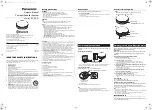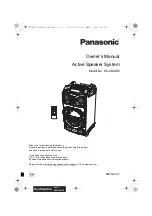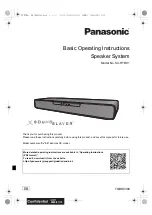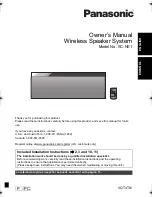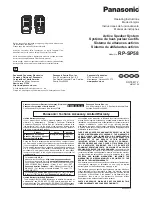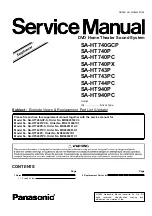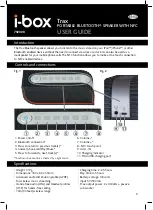
Rigging and Safety Procedures
Tannoy Professional loudspeakers should be installed only by fully
qualified installers using dedicated Tannoy hardware, in accordance
with all the required safety codes and standards that are applied
at the place of installation.
WARNING: As the legal requirements for flying/suspending/hanging/
rigging loudspeakers change from country to country, please consult
your local safety standards office before installing any product. We
also recommend that you thoroughly check any laws and bylaws
prior to installation. For more detailed information on rigging hardware
and safety procedures, please consult the full VX Series and VXP
Series Hardware Manual available at www.tannoy.com.
Bi-Amp Operation
The VX 12HP, VX 12Q, VX 12.2Q, VX 15HP, VX 15Q only may be
internally reconfigured for bi-amp operation to supply greater system
headroom. Reconfiguration is as follows:
First, remove the rear termination panel. It is secured with 2.5 mm
hex drive screws.
In passive (default) mode, the internal wiring is as shown in Fig. 1,
with the full-range signal routed through the internal crossover and
divided into separate LF and HF signals using a 4-pole connector.
For bi-amp operation, reconfigure the internal wiring as shown in
Fig 2. The two-wire connector leading to the crossover is disconnected.
The four-wire connector from the speakers now bypasses the crossover
and instead connects directly to the speakON inputs, replacing the
connector that previously led to the crossover.
For bi-amp operation, the speakON connectors coming from the
amplifier(s) must be wired as follows:
speakON
Amplifier
1 +
LF +
1 -
LF –
2 +
HF +
2 -
HF –
Note that the barrier strip terminals are wired for passive full-range
operation only.
tannoy.com
Tannoy (Direct UK)
T: +44 (0) 1236 420199
E: enquiries@tannoy.com
TCGI (ROW sales)
T: +46 8742 7000
E: info@tcgroup-international.com
TCGA (Americas sales)
T: +1 (519) 745 1158
E: info@tcgroup-americas.com
Tannoy Middle East
T: +97 1 (04) 4401208
E: enquiries@tannoy.com
6481 0585 / 0911
Fig. 2.
Fig. 1.





